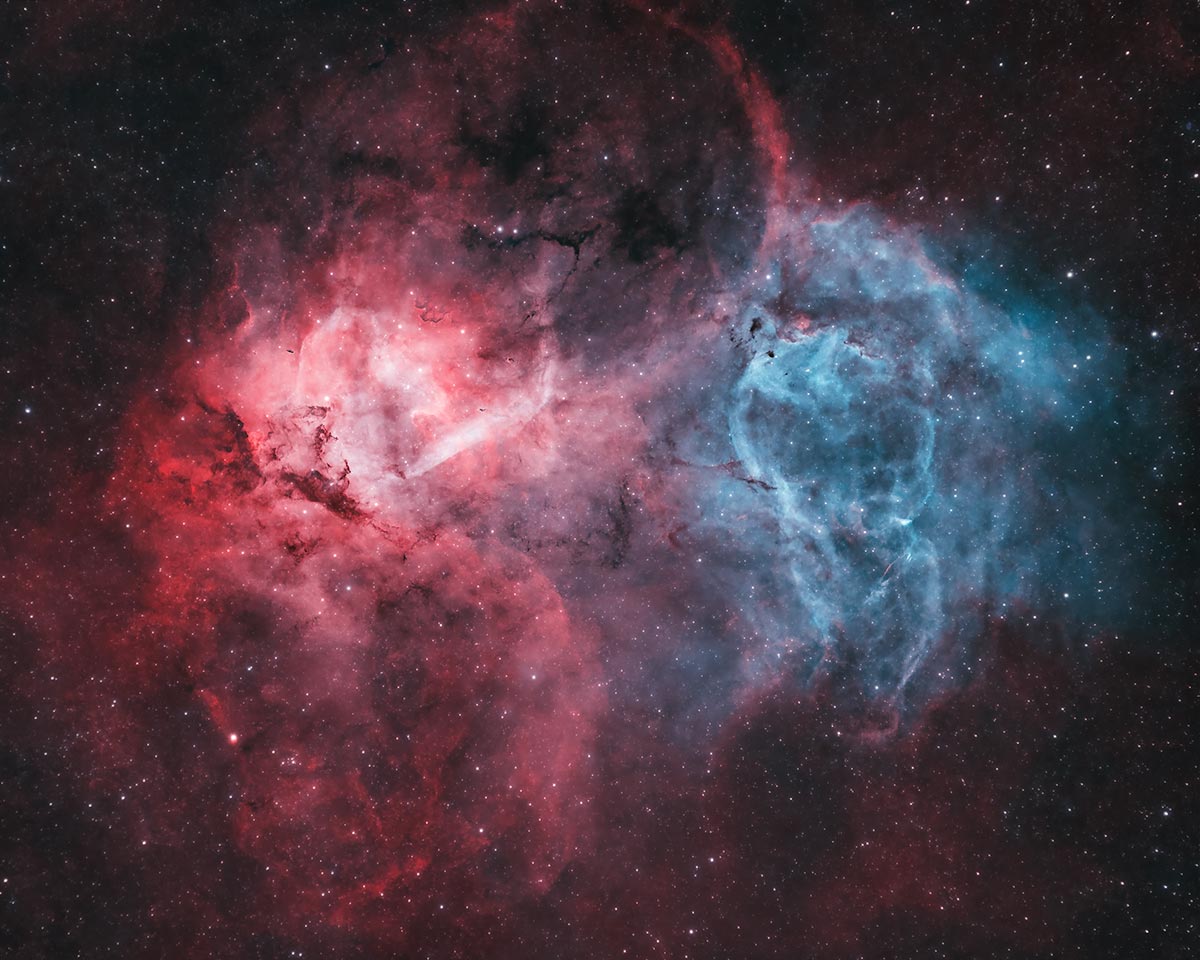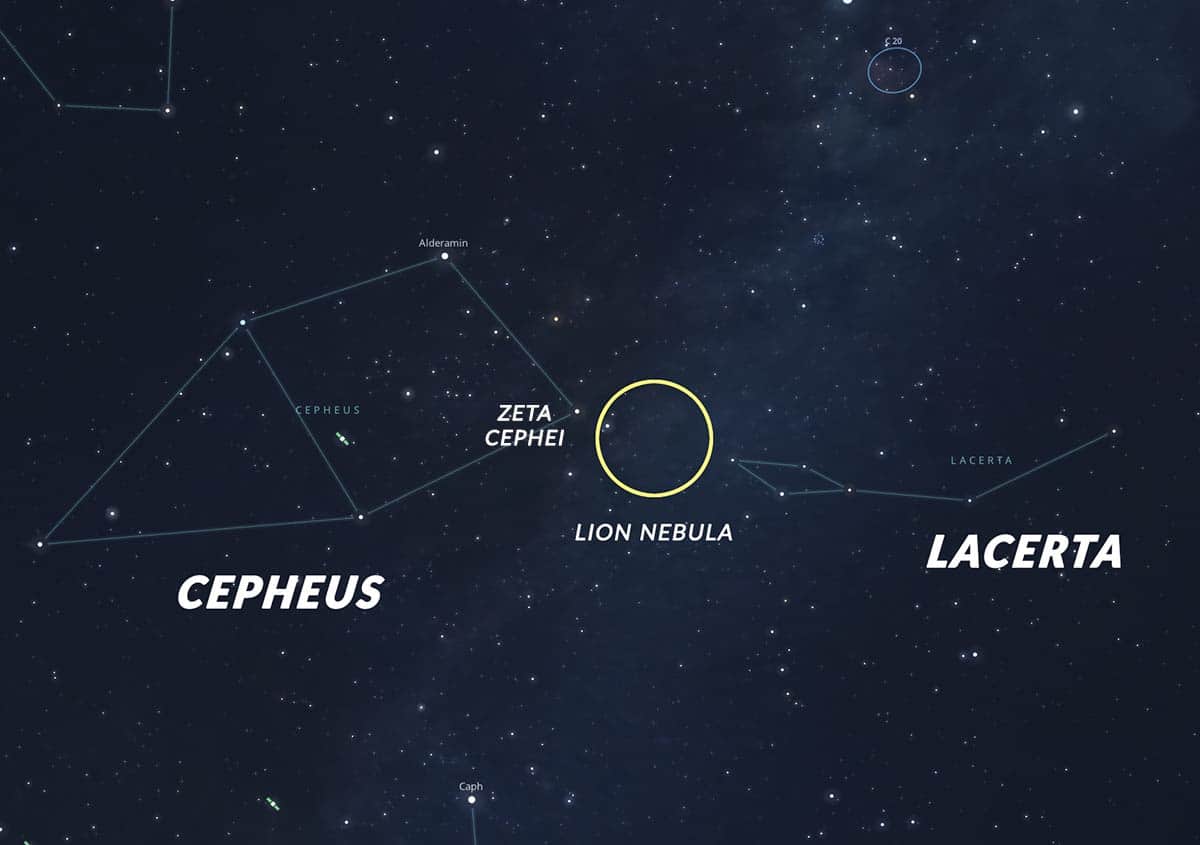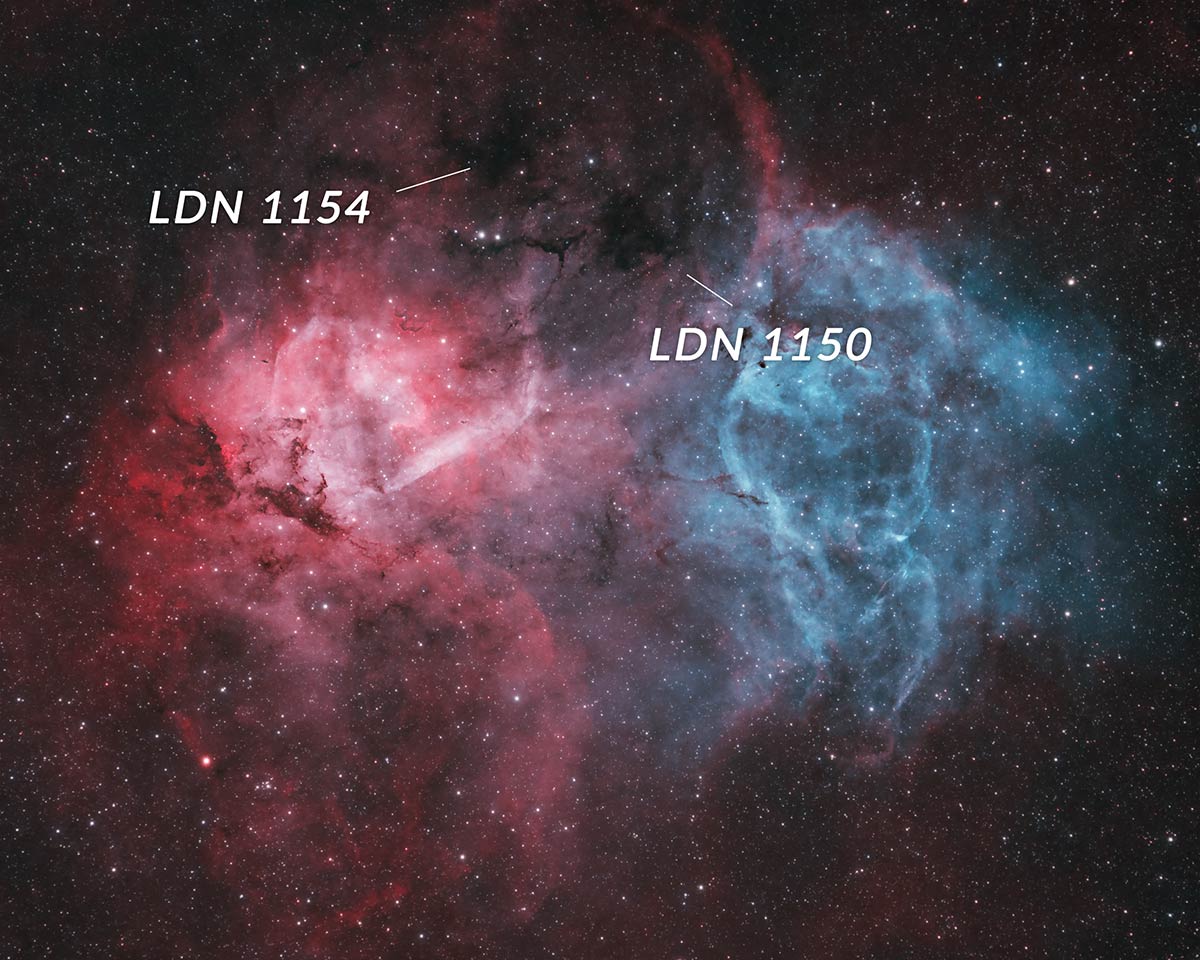The Lion Nebula
The Lion Nebula (Sh2-132, or Sharpless 132) is a deep-sky nebula in the constellation Cepheus.
It is a rich hydrogen region with star clusters, emission nebulae, and dark dust regions that can only be revealed through astrophotography.
While the Lion Nebula is quite large (40 arc mins in size), it is too dim to observe visually through the eyepiece of a telescope.
The Lion Nebula (Sharpless 132) captured using narrowband filters. Trevor Jones.
Another version of the Lion Nebula. RedCat 51 + ZWO ASI2600MC Air. (7 hours total exposure)
It is located in the southern portion of the constellation Cepheus, bordering the constellation Lacerta.
Sharpless 132 is primarily an emission nebula and is estimated to be roughly 10,000 light-years away in the Perseus Arm of the Milky Way Galaxy.
Two Wolf-Rayet stars have been identified in the Lion Nebula (HD 211564, HD 211853) and are responsible for ionizing the gas in this region.
The Lion Nebula in Cepheus is believed to be a region of new star formation.
The Lion Nebula (Sh2-132)
While you may be hoping to see this object with your eyes, it is just too dim to be observed visually through the eyepiece of a telescope.
To enjoy Sharpless 132 from my backyard, I need to take long exposure pictures of it using a specialized camera for astrophotography.
My latest photo of the Lion Nebula was taken using a William Optics GT81 WIFD refractor telescope, which has a focal length of 480mm at F/5.9.
The following image was created by capturing roughly 8 hours of total exposure time through Ha (hydrogen-alpha) and OIII (Oxygen) narrowband filters.
This is considered to be a ‘HOO palette’ image. The Ha image data was mapped to the red channel, and the OIII image data was mapped to the green and blue channels.
The Lion Nebula in HOO. William Optics GT81 WIFD. ZWO ASI2600MM Pro.
Photo Details
Total Exposure: 8 Hours, 10 minutes (Ha: 50 x 300s, OIII: 60 x 240s)
- Camera: ZWO ASI2600MM Pro
- Filters: Chroma 3nm OIII (36mm), Chroma 3nm Ha (36mm)
- Filter Wheel: ZWO EFW (7-position, 36mm)
- Telescope: William Optics GT81 WIFD
- Mount: ZWO AM5 Strain Wave Mount
Image Processing:
- Integration, Calibration: DeepSkyStacker
- Post Processing: Adobe Photoshop, PixInisght
Location and Info
The Lion Nebula is located in the constellation Cepheus, bordering nearby Lacerta.
In the following graphic, you can see that Sh2-132 is at the very edge (or, the right shoulder) of Cepheus, near the bright star Zeta Cephei.
Zeta Cephei is an orange supergiant star that lies approximately 840 light years away from Earth.
The location of Sharpless 132 in Cepheus. Created using Stellarium Web.
In the Northern Hemisphere (Cepheus is a northern constellation), the best time to point your telescope toward the Lion Nebula is from July – October when Cepheus rises high overhead.
Wolf-Rayat Stars
This deep-sky object includes two Wolf-Rayet stars with the codes HD 211564 and HD 211853 (WR 153).
Wolf-Rayet stars are at least 20 times more massive than the sun and represent a ‘final burst of activity‘ before they begin to die and eventually go supernova.
Wolf-Rayat 153 is a variable star. Variable stars are stars that change in brightness over periods of a fraction of a second to years, depending on the type of variable star.
You can see the area of SH2-132 that contains WR 153 in better detail in the following image.
Sh2-132 in the Hubble Palette. Sky-Watcher Esprit 100 and ZWO ASI2600MM Pro.
Astrophotography
To fully appreciate the Lion Nebula through astrophotography, I recommend using narrowband filters to isolate the prominent gases in the object.
I use Chroma 3nm narrowband filters (36mm) in a ZWO EFW (electronic filter wheel) to capture images with my monochrome astrophotography camera.
In the image below, you can see my screen on the ZWO ASIAIR Plus mobile app. This is the Sky Atlas planetarium mode where you can select and frame your intended astrophotography target.
The Lion Nebula as seen from the ASIAIR Sky Atlas feature.
Plate-solving is a must for this target because it is rather dim. There are not many bright stars in the area (other than Zeta Cephei) to use as a reference.
Luckily this was an easy process for me using the ASIAIR with the ZWO AM5 Strain Wave mount. Notice the angle of my image frame to include the entire length of the nebula.
You can see the full-size version of my latest image of Sharpless 132 on AstroBin.
The astrography telescope used to photograph the Lion Nebula images on this page.
Dark Nebulae
As you can see in the annotated image below, there are two interesting dark nebulae located within the Sh2-132 region.
These deep-sky objects are known as ‘Lynds Catalog of Dark Nebulae‘, or simple, LDN objects.
LDN objects in the Sh2-132 region. LDN 1154 and LDN 1150.






